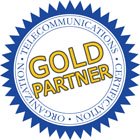This article previously appeared in the free monthly Teracom newsletter. subscribe
Those who do not learn their history are doomed to repeat it.
You may be interested in learning about Voice over IP (VoIP). You probably should be interested in learning about it, as all telephone calls will be VoIP in the not-too-distant future.
If you want to understand Voice over IP, there are a number of technologies that come in to play. One is Voice. Another is IP.
Voice is digitized in the phone in a VoIP system to be carried in IP packets.
Voice digitization involves three elements:
1) Sampling the value of the analog voltage coming out of the microphone at regular intervals,
2) Quantizing the range of possible values of the sample into fixed increments, and
3) Coding the resulting quantized value into binary.
The questions that arise are: how often do samples have to be taken, what are the quantization increments and what algorithm is used to represent the quantized value in binary?
It turns out that it is necessary to take samples more than twice as often as the width of the frequency band of the analog voltage coming out of the microphone.
Whoops! All of a sudden we're back to the summer of 1874 when Alexander Graham Bell made some design decisions, and a bit later when loading coils were deployed on long-distance trunks, which directly affect the method of digitization of voice for Voice over IP.
And the quantization and coding algorithms for VoIP are the same as those used for digital voice channels called DS0s beginning in the 1950s.
We would claim that if you don't understand this progression of one thing on top of another, you will never really understand where we are today, and won't be ready to understand where we are going tomorrow, the All-IP Network.
In Teracom's courses, seminars and books, we start at the beginning, progress in a logical order, and finish at the end - to build structured knowledge so that you can understand how everything fits together.
For more information: Course 101, Broadband, Telecom, Datacom and Networking for Non‑Engineers


